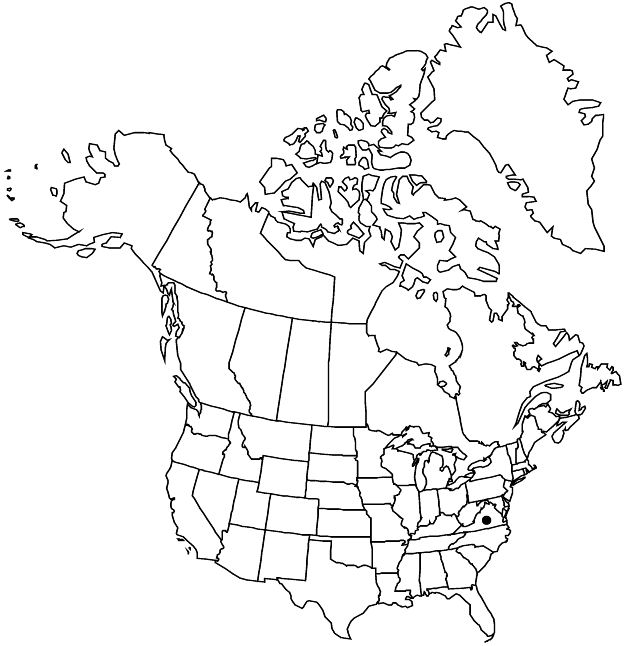Iliamna corei
Amer. J. Bot. 36: 503. 1949.
Stems 1–1.5 m; herbage stellate-hairy. Leaf-blades 5-lobed or 7-lobed, 5–10 cm wide, terminal lobe triangular, base ± truncate, margins serrate to nearly entire, sinuses narrow, acute. Inflorescences 2-flowered or 3-flowered clusters, sometimes solitary flowers, forming interrupted spikes distally; involucellar bractlets filiform, 6–8 × 1 mm, 1/2–2/3 times as long as calyx. Flowers odorless; calyx 12 mm, lobes broadly lanceolate, long-acuminate, 6–8 mm, longer than wide, longer than tube; petals pale-pink to deep rose, 2.5 cm. Schizocarps 12 mm diam.; mericarps 11–16, 10 mm. Seeds 2 (or 3), dark-brown, 2.5 mm, puberulent.
Phenology: Flowering late Jun–Aug.
Habitat: Open, shrubby woodlands in pockets of soil among sandstone outcrops
Elevation: 700–800 m
Discussion
Of conservation concern.
Iliamna corei is known from a single locality on Peters Mountain at Narrows, Virginia. The species is considered critically imperiled globally. Whether it is distinct or not from I. remota, with which it is sometimes allied, has been problematic, but recent genetic studies support their recognition as distinct species (T. A. Bodo Slotta and D. M. Porter 2006).
Iliamna corei is in the Center for Plant Conservation’s National Collection of Endangered Plants.
Selected References
None.
Lower Taxa
No values specified.
